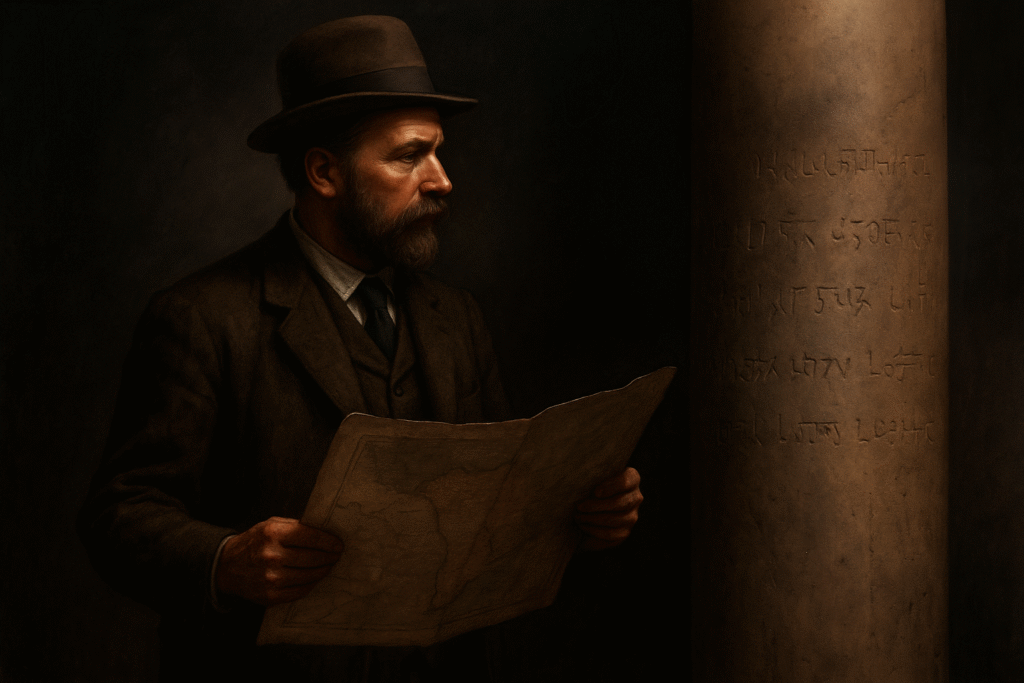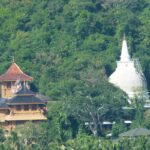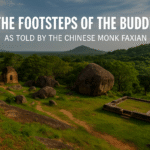“The letters shine too fresh for 2200 years. The name ‘Ashoka’ isn’t even there. And the man who reported it? Dismissed for archaeological fraud.”
— Buddha of Lanka Project
For over a century, schoolbooks and history tours have pointed to a sandstone pillar in Lumbini, Nepal, as the place where Emperor Ashoka stood and honored the birthplace of the Buddha. But what if this iconic monument — the Rummindei Pillar — is not what we were told?
What if the inscription praising Sakyamuni Buddha and bearing Ashoka’s name was never truly there?
And what if the man who made it famous — Dr. Alois Anton Führer — was later caught for faking archaeological discoveries, and his Lumbini reports were officially withdrawn and destroyed?
Let’s investigate 👇
Who Was Alois Anton Führer?
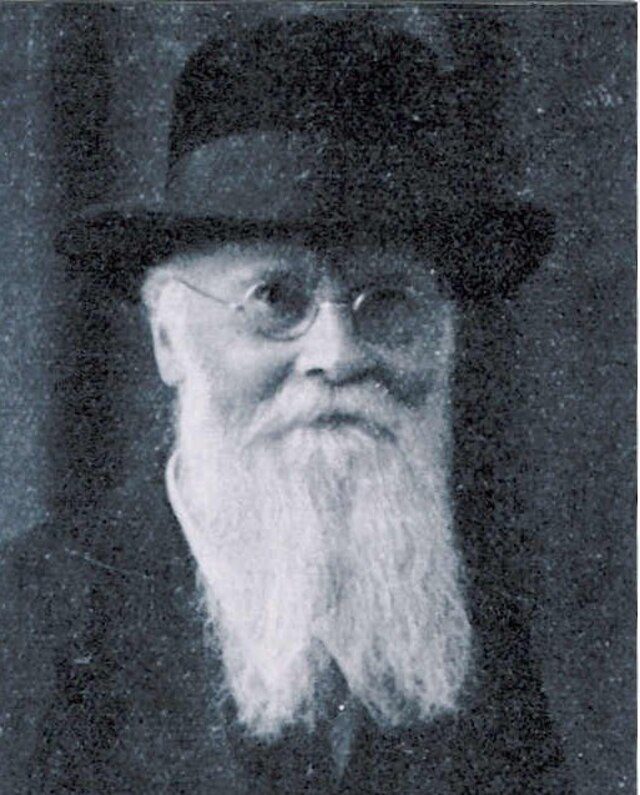
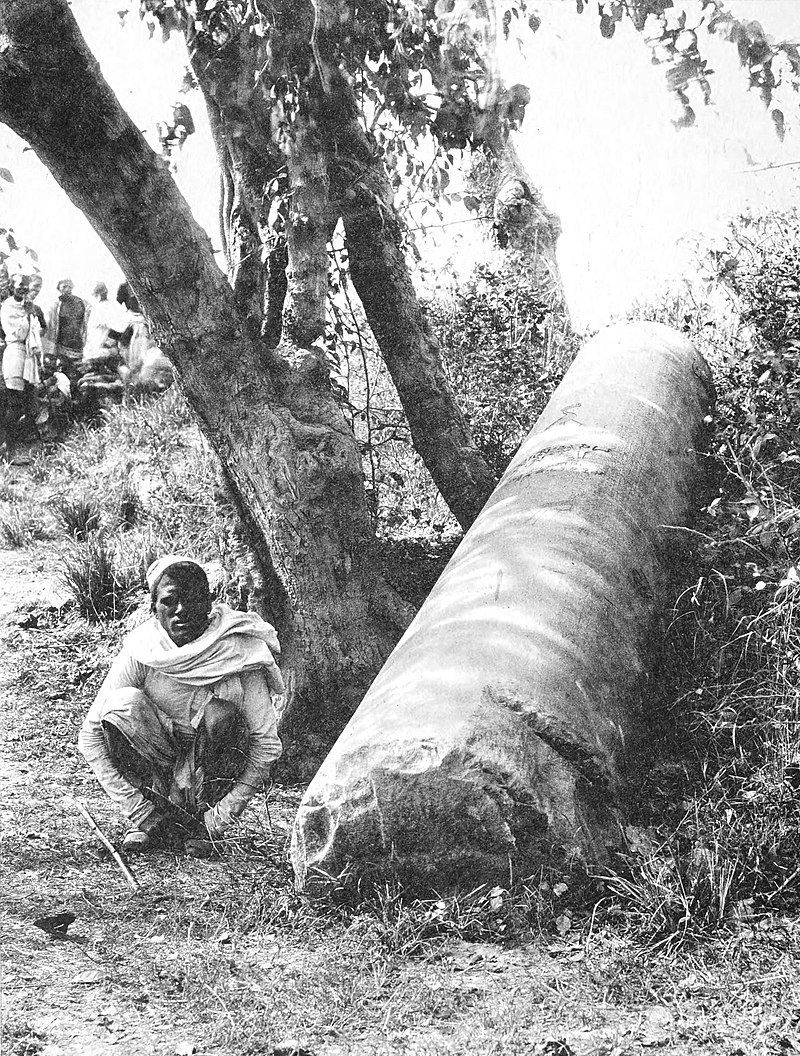
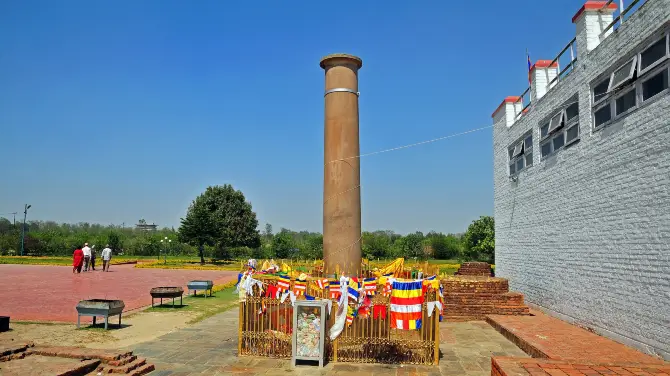
- German-born archaeologist, joined the Archaeological Survey of India (ASI) in the 1880s
- Claimed to discover many key Buddhist sites in India and Nepal
- Most famously credited with:
- The Lumbini pillar inscription (Rummindei) in 1896
- The Nigali Sagar pillar near Kapilavastu
- But by 1898, Führer was dismissed for fabricating findings and plagiarizing inscriptions from other scholars
Official British Government Response (1899)
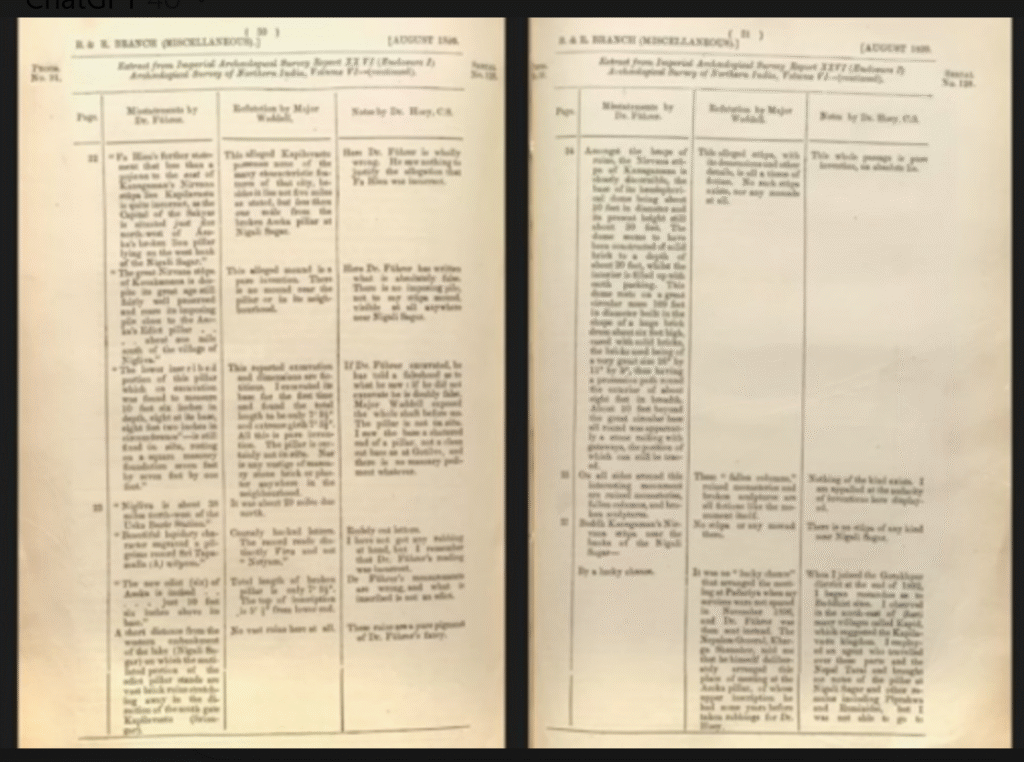
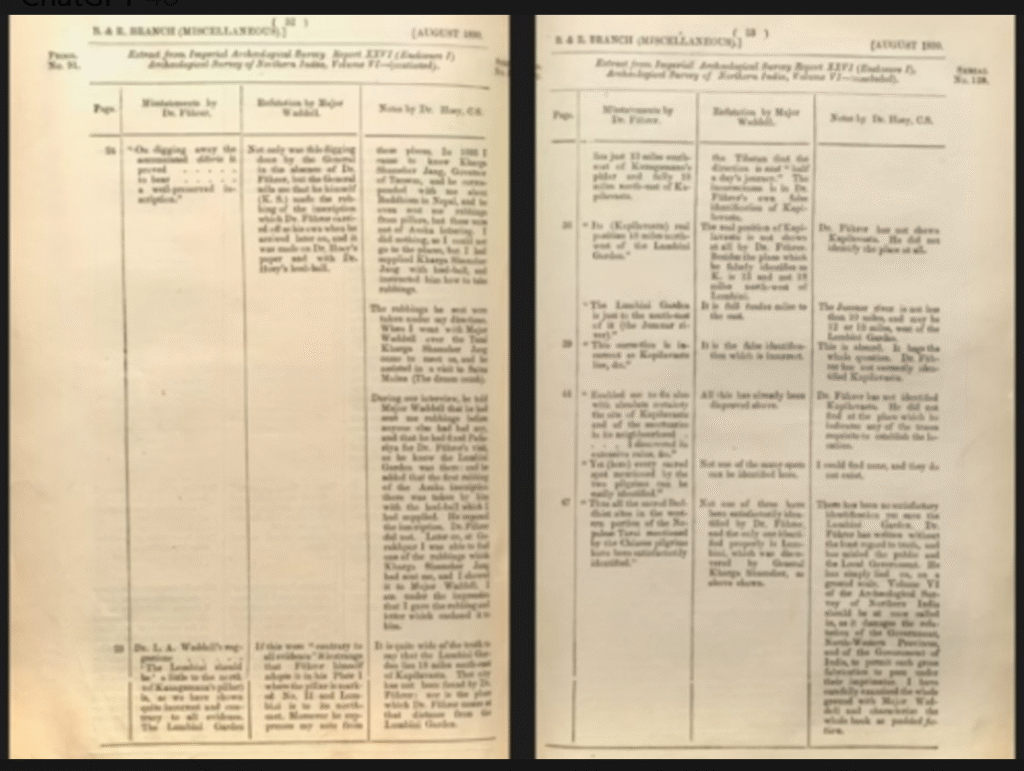
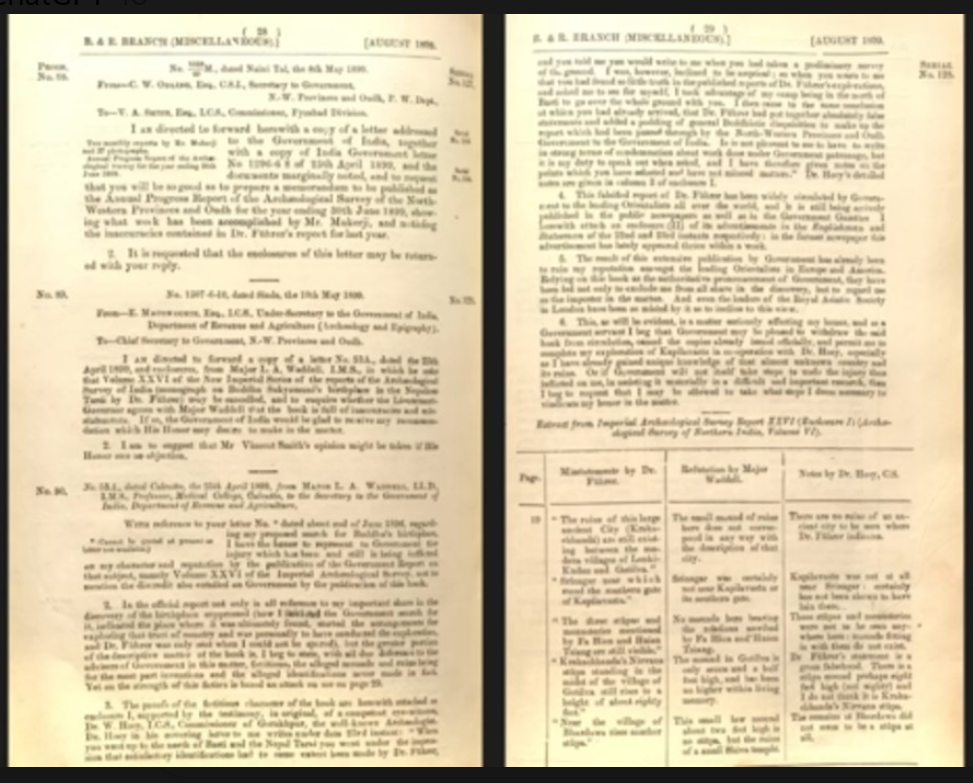
In August 1899, the British Government of N.W.P. and Oudh issued a formal memorandum revealing:
“Numerous inaccuracies in Dr. Führer’s reports…”
“His reports have been withdrawn from circulation…”
“All copies remaining in stone destroyed by order of the Government of India.”
(Imperial Archaeological Survey Report – India Office Library, 31st August 1899)
💥 That’s not just embarrassment — that’s a full government-level rejection of his credibility.
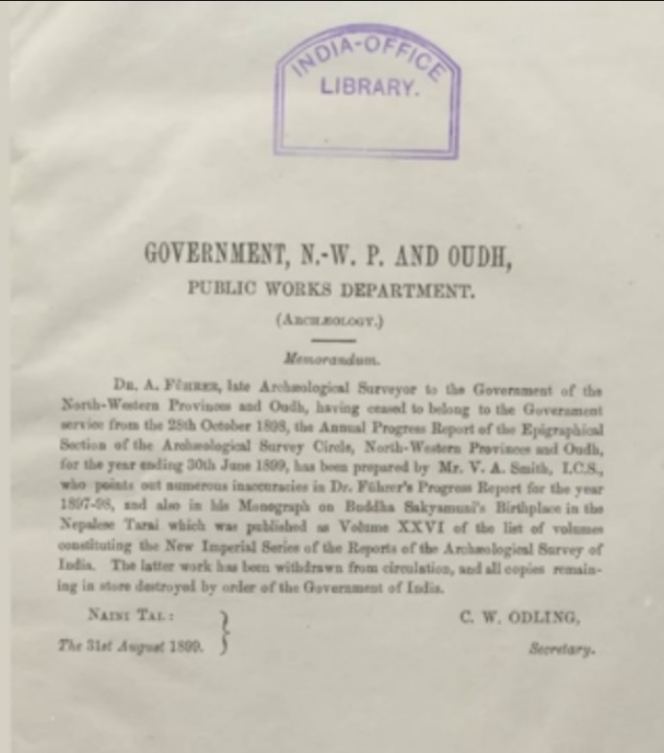
What About the Lumbini Inscription?
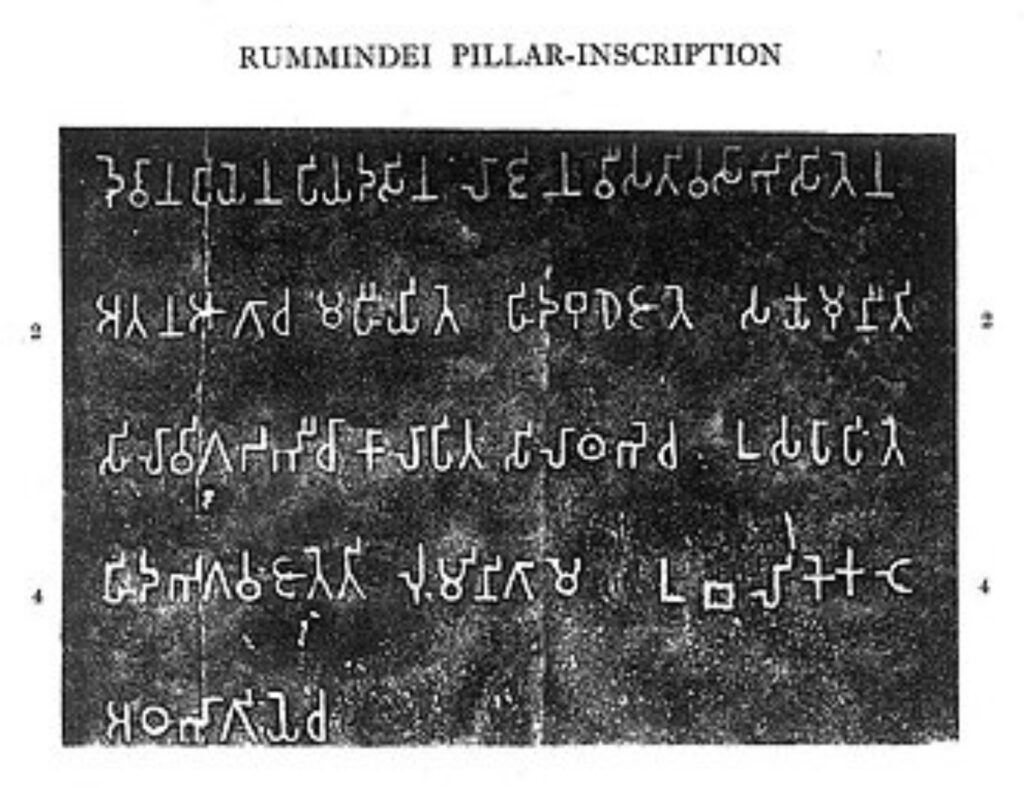

1. The Strange Discovery Location
The now-famous inscription on the Lumbini Pillar was discovered by Alois Führer in 1896. But here’s what they don’t often tell you:
🔴 The entire inscription was buried nearly 1 meter underground.
That means no pilgrim, no monk, no king, no follower could read it for centuries — if it had even existed before its “discovery.”
2. The Carving Itself — Too Perfect to Be Ancient?
Unlike other ancient inscriptions:
- The letters are deep, even, and sharp — no erosion or age damage
- No mineral staining, no patina, no signs of 2200 years underground
- Line spacing is modern and precisely aligned like a machine
- No border design, royal seal, or floral motif — unlike true Ashokan edicts
📌 Looks more like a freshly added label than a 3rd century BCE royal proclamation.
3. AI Carving Analysis vs. Standard Transliteration
Here’s how our AI interpretation compares to the official Wikipedia version:
| 🧾 Line | Wikipedia Reading | AI Visual Reading | Trust Level |
|---|---|---|---|
| 1 | Devānampiyena Piyadasina Lājina | “Devanapiya…” possible, ‘Laja’ unclear | ⚠️ Partial match |
| 2 | hida Budhe jāte Sakyamuni ti | ✅ “Hida Budha Jathe” clear, Sakyamuni questionable | ✅ 90% match |
| 3 | silā vigadabhī… | ❌ “Horse” word not visible or readable | ❌ Not trusted |
| 4 | hida Bhagavaṃ jāte ti Lummine gāme | ✅ AI confirms this line nearly fully | ✅ Confirmed |
| 5 | ubalike kaṭe aṭha-bhāgiye | ✔️ “Aṭha” and “Bhāgiye” visible, partial match | ⚠️ Likely |
🧠 Bottom Line: The most important parts (“hida budha jaathe”) are genuine, but Ashoka’s name, Sakyamuni title, and ‘horse’ stone are weak or missing.
4. Written By Ashoka… or By Someone Else?
Even the official British Government later condemned Führer’s work for forgery and exaggeration. His records show inconsistencies, missing witnesses, and contradictory timelines.
🪨 So the question remains:
❓ Would Ashoka, in all his public works, ever bury his most important inscription?
Or was it placed there to be discovered — and change the story?
Führer claimed to have discovered an inscription carved on the Ashokan pillar at Rummindei (Lumbini), which said:
“Here the Buddha, the Sage of the Sakyas, was born.”
And claimed it included the name “Devanampiya Piyadasi Laja” (Ashoka’s full royal title)
But here’s what Project Deep Script (our AI decoding system) found from the actual carved letters:
AI Reading vs Claimed Translation
| Claimed by Führer | Carved in Stone | Comment |
|---|---|---|
| “Ashoka” (𑀅𑀰𑁆𑀱) | ❌ Not carved | AI reads 𑀅𑀲𑁆𑀲𑀼𑀓𑀺 = Assuki or Assakī |
| “Devanampiya Piyadasi” | ❌ Not carved | No 𑀤𑁂𑀯 (deva), 𑀧𑀺𑀬 (piya), or 𑀤𑀲𑀺 (dasi) |
| “Laja” (𑀮𑀚) | ❌ Not carved | Absent in both stone and position |
| “Sakyamuni Buddha was born here” | ✅ Found in restored segment | Present on an angled smoother part, likely added later |
🧱 Most of the celebrated names are not present at all in the actual carving — only in assumed reconstructions.
Inscription Placement – Does It Even Make Sense?
- Typical Ashokan inscriptions were carved before erection, so letters face directly outward
- The Lumbini inscription was found just above ground level, on the side — preserved because it was buried
- The upper side of the pillar is weathered, but the lower inscription is “too clean” for its age
⚠️ This supports the possibility of:
- Post-discovery re-carving
- Colonial-era enhancement
- Or that the original lines were shallower or missing
Suspicious Timing
- Führer made his “discovery” during a period of career pressure
- By 1898, he was under investigation for forgery
- By 1899, he was dismissed, and his Lumbini report was banned and destroyed
This means:
⚔️ The entire basis for “Buddha was born here” on this pillar — rests on the word of a man officially proven to have lied in the same report.
Lanka Connection: Why This Matters
Compare this with Sri Lankan cave inscriptions:
- Real carved names like “Gothama Sramana”, “Budasa”, “Laja Devanapiya”
- Found in places like:
- Bambaragala (birth cave inscription)
- Budugala
- Isinbassagala
- No fabrication — just stone, script, and silence
Final Questions to Ask
- If the Lumbini inscription was so well preserved, why was it never recorded before Führer?
- Why are key names missing in the actual carving, but appear in published estampages?
- Why did British India destroy all copies of Führer’s report if it was legitimate?
- Why do Sri Lankan inscriptions show consistent terminology and donation styles related to the Buddha?
Final Conclusion
🧱 The Lumbini pillar may be ancient…
✍️ But the inscription as we know it may be a modern invention, shaped by colonial imagination, not carved history.This one pillar, carved where no one could read it, “discovered” by a known forger, and yet upheld for over a century — holds the cornerstone claim that the Buddha was born in India.
The evidence is stacking:
- AI stone readings don’t match the claims
- The man behind it was discredited
- The Sri Lankan evidence is older, clearer, and untouched
But when the stone speaks for itself — what does it really say?
What We Must Do Next
- Compare each Lanka site inscription directly
- Publish a pillar-by-pillar decoding of Lankan “Laja” and “Budasa” mentions
- Invite international researchers to revisit the Lumbini claim
- Promote inscription truth — not tradition
Have thoughts on this?
We welcome real researchers, skeptics, and spiritual seekers to contribute. If you’ve visited a sacred site with original inscription traces, send us photos or leads.
👉 Submit your travel Insights / Photos
📩 Email: info@buddhaoflanka.com
🔗 Join the movement: #ProjectDeepScript
Inspired by Field Investigations
This post is inspired by the insightful video “Let’s find the Correct Siri Sambodiya” from the YouTube channel TruthConnectTV, which originally raised many of the questions explored here. We appreciate the effort to seek deeper truths through field visits and bold questioning. 🙏

